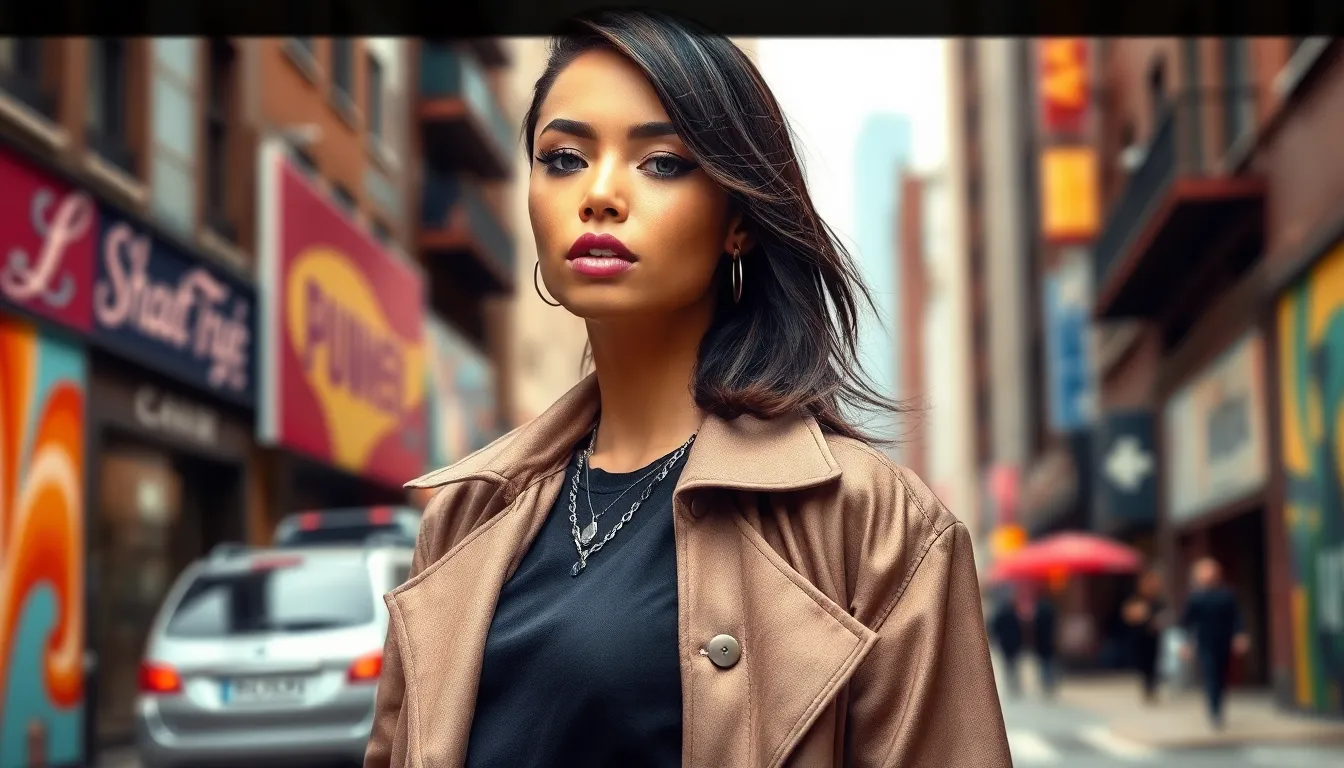When it comes to magazine photography, creativity knows no bounds. Whether you’re capturing the latest fashion trends or showcasing mouthwatering culinary delights, the right idea can turn a simple shot into a stunning visual story. But let’s be real—sometimes, inspiration can feel as elusive as a cat in a room full of rocking chairs.
Table of Contents
ToggleCreative Magazine Photography Ideas
Exploring unique themes can elevate magazine photography. Fashion shoots against urban backdrops create striking contrasts, adding depth and personality. Incorporating natural elements, like flowers or landscapes, provides organic touches that enhance visuals. For food photography, consider colorful plates and artful arrangements; the presentation draws attention and entices readers.
Dramatic lighting techniques present another route for creativity. Utilizing shadow play creates mood and highlights specific subjects, transforming mundane objects into focal points. Portrait photography benefits greatly from experimenting with angles; whether from above or below, unconventional perspectives can offer fresh insights.
Emphasizing storytelling within images leads to compelling narratives. Candid shots capturing emotions deliver authenticity, resonating deeply with viewers. Styling outfits related to the theme or season, like cozy sweaters in autumn settings, connects imagery to the audience’s experiences.
Collaboration with stylists and designers further enhances visuals. Combining various artistic elements can result in cohesive themes throughout the shoot. Exploring unexpected locations, such as abandoned buildings or vibrant street art, allows for intriguing backdrops that tell a story.
Variety in composition also plays a crucial role. Close-up shots emphasize details, while wide angles showcase the environment. Blending these styles creates a dynamic layout that captivates readers. Engaging with mixed media, such as integrating illustrations or text overlay, offers unique visual experiences.
Lastly, considering seasonal themes can spark new ideas. Expressing holiday moods or seasonal changes reflects current trends, making the content relevant and relatable. Following these creative approaches can significantly elevate magazine photography, transforming common concepts into captivating artwork.
Types of Magazine Photography

Magazine photography encompasses various styles, each serving a distinct purpose in visual storytelling. These types include fashion photography, editorial photography, and product photography.
Fashion Photography
Fashion photography captures the essence of clothing and accessories, often showcasing them in dynamic settings. This type emphasizes the interplay between models and surroundings, creating striking narratives. Urban locations often serve as vibrant backdrops that enhance the clothing being displayed. Lighting plays a critical role in highlighting textures and colors, fostering a captivating aesthetic. Collaborations with hairstylists, makeup artists, and designers result in cohesive and visually stunning imagery. This genre thrives on trends, drawing inspiration from culture and seasonal shifts.
Editorial Photography
Editorial photography tells compelling stories through images featured in magazines, conveying a particular theme or idea. This type often includes a mix of portraits, action shots, and environmental elements, creating a narrative flow that engages readers. Visual storytelling remains key, as the imagery should complement the written content. Strong concepts and innovative angles create an emotional connection, inviting viewers to immerse themselves in the scene. Capturing authentic moments often results in powerful visuals that resonate deeply, reflecting real-life experiences and emotions.
Product Photography
Product photography focuses on showcasing items for commercial purposes, highlighting their details and features. This type uses various techniques, such as clean backgrounds and strategic lighting, to draw attention to the products. Composition and framing remain important, ensuring that the items occupy the ideal space within the frame. Contextual shots offer viewers ideas on how to use the products, while close-ups reveal intricate details. High-quality product imagery enhances brand perception and drives consumer interest, making it essential for magazines to present items compellingly.
Techniques for Stunning Magazine Shots
Exploring effective techniques is essential for capturing stunning magazine shots.
Lighting Techniques
Natural light enhances the richness of magazine photography. Soft, diffused sunlight creates an ethereal look, perfect for outdoor shoots. In contrast, dramatic artificial lighting brings a bold aesthetic to indoor settings. Utilizing golden hour light adds warmth and texture to portraits, highlighting subjects beautifully. Experimenting with backlighting generates striking silhouettes that capture attention. Utilizing reflectors can bounce light back onto subjects, eliminating harsh shadows. Additionally, mixing warm and cool light sources will create a dynamic and appealing visual contrast. By strategically manipulating light, photographers can evoke different moods and enhance storytelling.
Composition Tips
Effective composition serves as the backbone of enticing magazine shots. The rule of thirds guides photographers in placing subjects in visually appealing positions. Incorporating leading lines directs viewers’ eyes toward focal points, maintaining interest. Framing elements, like trees or doorways, adds depth and context to photos. Candid moments often tell stronger stories than posed ones, fostering authenticity. Varying angles, from high above to low below, reveals unique perspectives that captivate viewers. Using negative space can emphasize subjects, allowing them to stand out within a busy design. Finally, providing a consistent visual theme helps maintain coherence across images in a magazine spread.
Best Practices for Magazine Photographers
Understanding the target audience is crucial for magazine photographers. Capturing images that resonate with readers enhances engagement. Age, interests, and cultural backgrounds define audience preferences. Tailoring concepts and styles to fit these demographics leads to more captivating photography. Additionally, research into popular trends can guide photographers in creating relevant visuals that attract attention. Delivering content that aligns with reader expectations strengthens the overall impact of the magazine.
Collaborating with writers and editors is essential for cohesive magazine photography. Coordination ensures that visuals complement the written content effectively. Discussing themes and storylines beforehand provides clarity on the desired outcome. While photographers focus on imagery, writers convey the narrative. Establishing open communication allows for feedback and iterative improvements. Collectively, they enhance the storytelling aspect of the magazine, making sure each photograph serves to elevate the accompanying text. Prioritizing this collaboration creates a unified vision, yielding more compelling issues.
Exploring magazine photography opens up a world of creative possibilities. By embracing innovative themes and techniques photographers can transform their work into powerful visual narratives. The combination of unique locations dramatic lighting and engaging compositions can elevate any shoot.
Collaboration with stylists and writers ensures that every image resonates with the intended audience. Staying attuned to current trends and seasonal themes keeps the content fresh and relevant. With these strategies in mind photographers can capture stunning visuals that not only tell stories but also leave a lasting impact on readers.



